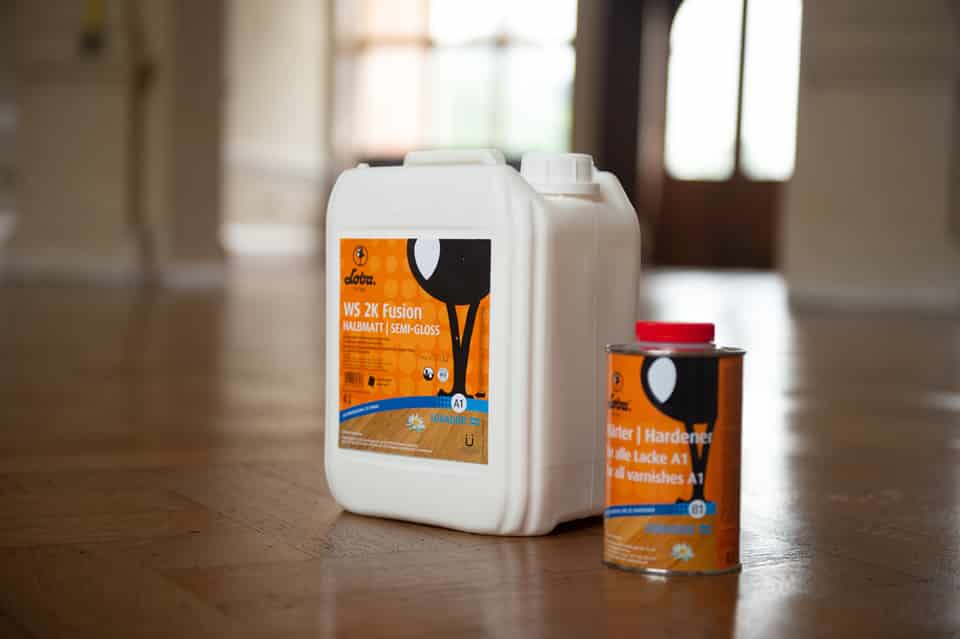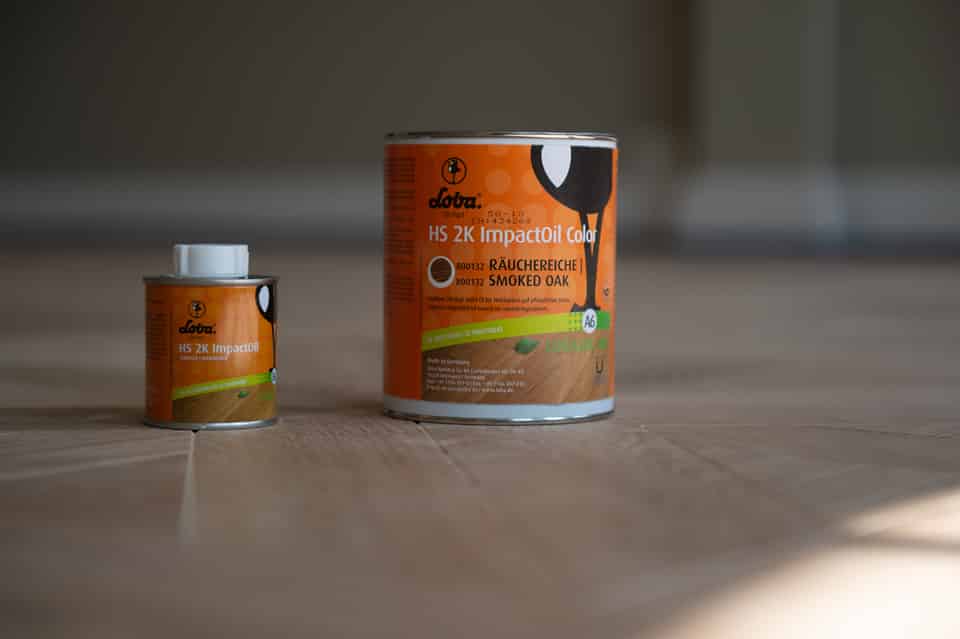Lacquer or oil?
When renovating a wooden floor, this is usually the first question you must try to answer:
“Which finish is best for a wooden floor?”
There are basically two systems available on the market: lacquer and oil. Deciding on which system is best for your specific floor can be difficult. The choice of finish depends on how the floor is to be used but it is also subject to personal preference. Below we list the different systems, each with their advantages and disadvantages.
Lacquer systems
Lacquers can be applied at the factory, immediately after the installation of the floor or after the renovation (sanding) the floor surface.
Various systems are available. These can differ, for example, in:
- Quality
- Color effect
- Sheen level
In the case of renovation, three layers of finish are usually applied to protect the wood. Usually a single layer of primer is applied that almost completely absorbs into the wood. After that, two layers of lacquer are often applied that sit as protective layers on top of the primed surface.
Advantages of lacquer systems,
• The lacquer more or less seals the wood, dirt does not get a chance to penetrate into the wooden surface
• Maintenance is very hygienic and relatively easy
• A floor finished with a lacquer has a long lifespan
• High customer satisfaction
Disadvantages of lacquer systems
• Compared to, for example, impregnation oil (often only one layer), a lacquer system is relatively more expensive
• The floor can be perceived as less natural
• There are fewer options for coloring the floor

Oil systems
Oils can also be applied at the factory, or immediately after the installation of the floor, or after renovating (sanding) the floor surface.
There are factory systems such as UV or LED oil, hard wax and impregnation oil.
In the case of renovation, impregnating oil is applied to protect the wood. This oil is usually applied in one layer.
Applying more layers of impregnating oil is pointless; it does not improve the quality. In fact, it usually leads to problems. In certain cases, a layer of color stain is applied first to achieve certain optical effects. Therefore, the impregnating effect of the oil protects the wood. There is no film formation on the surface.
Advantages of oil systems
• A good price / quality ratio (often only one layer is applied)
• The impregnating oil is relatively easy and quick to apply without any problems.
• The deeper color and open pores of the wood create a natural appearance that is relatively easy to repair afterwards.
• Many colors are offered, possibly including pre-treatment.
Disadvantages of oil systems
• The wood is not protected by a film; the pores of the wood are open.
• Maintenance must be carried out consistently in order to prolong the life of the floor.

Help and advice?
If you need help and advice on something that is not covered, please contact us and we will try our best to answer your questions.
CONTACT US FIND YOUR LOBA DISTRIBUTOR

